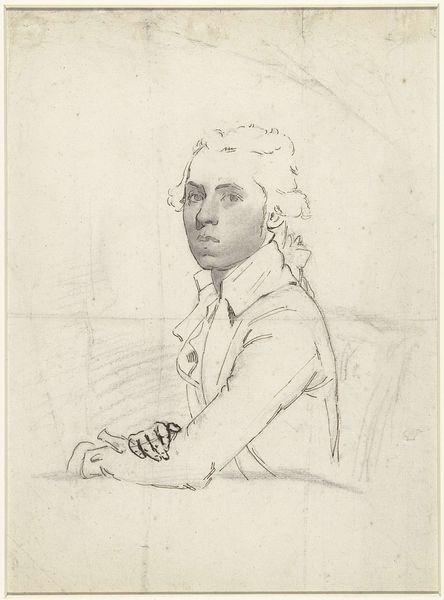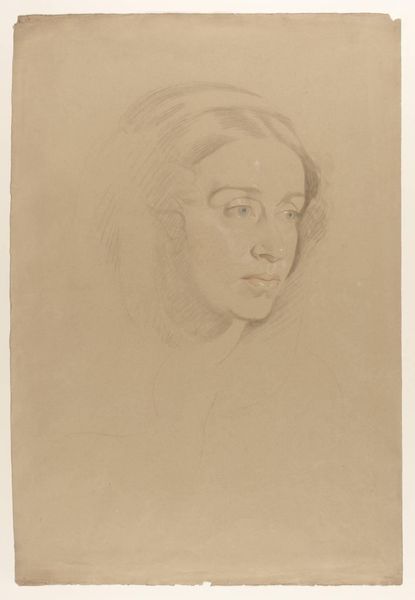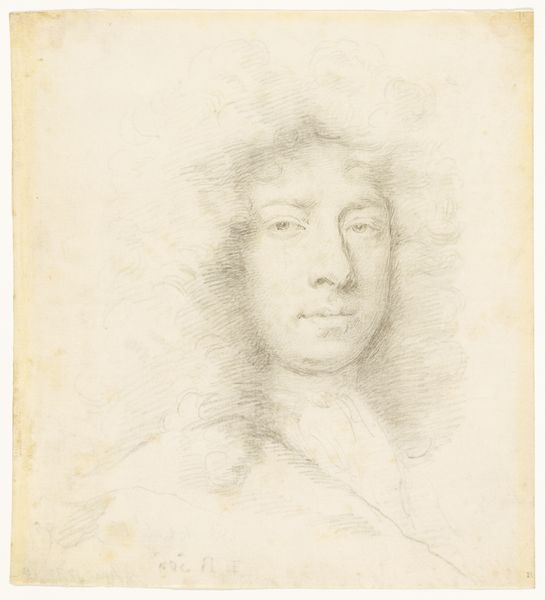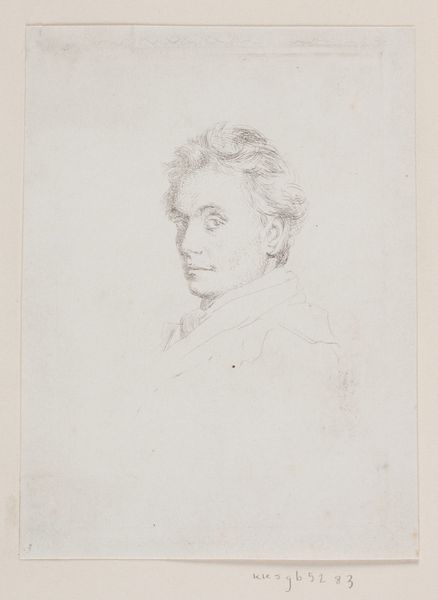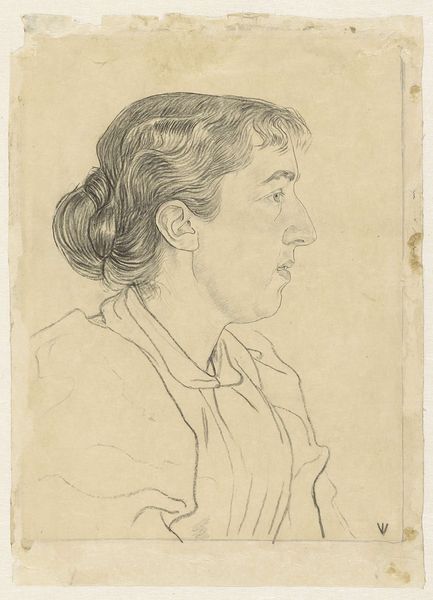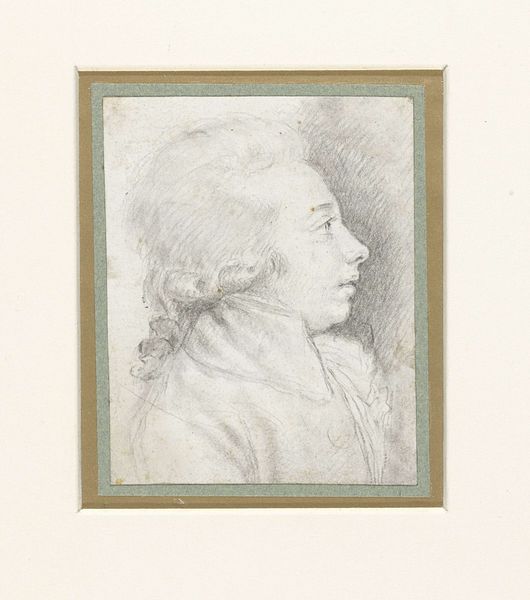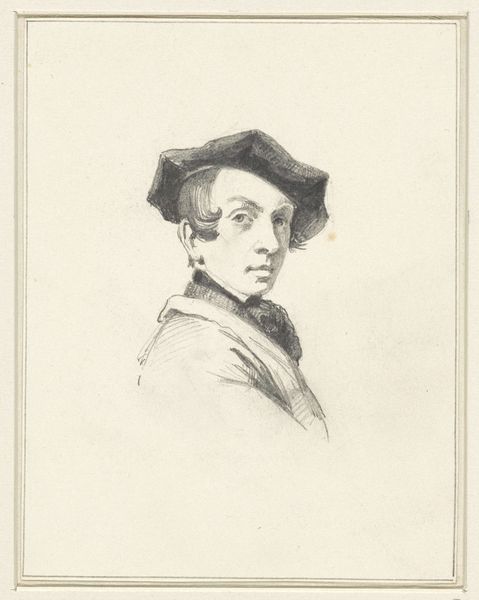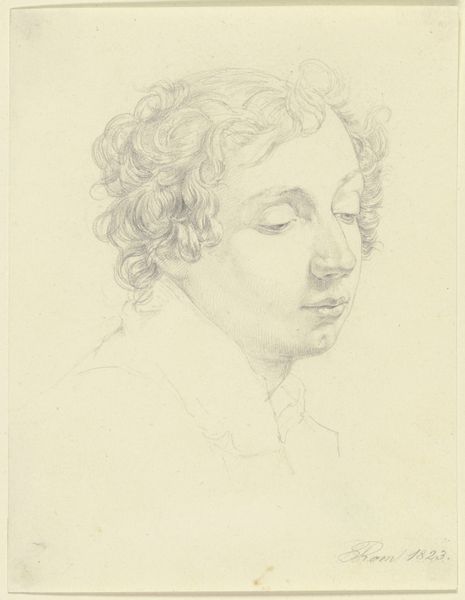
drawing, pencil
#
portrait
#
pencil drawn
#
drawing
#
pencil sketch
#
figuration
#
pencil drawing
#
romanticism
#
pencil
#
academic-art
Dimensions: height 288 mm, width 202 mm, height 100 mm, width 90 mm
Copyright: Rijks Museum: Open Domain
Curator: This pencil drawing, dating roughly from 1774 to 1837, is titled "Portrait of an Unknown Man" and currently resides at the Rijksmuseum. The artist is Charles Howard Hodges. Editor: It’s striking how light and tentative the drawing is, almost like a fleeting thought captured on paper. The wispy lines and delicate shading give it a somewhat melancholic feel. Curator: The portrait seems unfinished, focusing primarily on the sitter's face, and hinting very vaguely at his garments. Hodges’s use of pencil lends itself well to the romantic and academic artistic conventions of the time, prioritizing emotional resonance. Notice the somewhat averted gaze. Editor: I am very interested in the paper itself. It's creased with sharp folds toward the bottom, suggesting it might have been folded and stored for a very long time. Pencil, while seemingly humble, can capture nuance brilliantly. It makes me think about Hodges sitting with his model and their collaboration at a given point in time, in terms of the access to resources available to both parties. Curator: The choice of such a direct and easily accessible material, like pencil, is also noteworthy when we consider the subject. As an unknown man, Hodges might have seen him as a figure for introspection on everyday lives rather than nobility with historical claims. Editor: That very much brings up questions about Hodges’s artistic process. Was this a commissioned piece left unfinished, or a study? Was the anonymity of the subject tied to his social class, economic possibilities? It’s always fascinating to consider the socio-economic circumstances influencing these kinds of artistic decisions. Curator: Agreed, the ambiguity speaks volumes. The averted gaze could symbolize uncertainty. Editor: Or simply… the sitter was bored or moved slightly. I’m stuck thinking about the unseen labor of art and materials— paper and pencils are available thanks to a wide range of workers across social divides. Curator: It’s a very personal image that transcends the sitter. This image, therefore, asks: who are our common stories of those who remained unseen? Editor: Precisely. It prompts a consideration for those stories generally forgotten but preserved thanks to sketches such as this one.
Comments
No comments
Be the first to comment and join the conversation on the ultimate creative platform.


